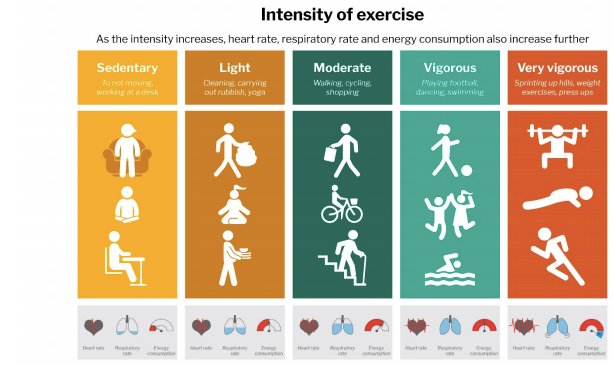Wellness
The recommended amount to move each week if you want to stay healthy
Take a look at these guidelines and see if you’re already smashing the target or could add a little more movement to your week.
Our regular nine-to-five can involve an awful lot of desk-sitting so you may want to consider the impact your sedentary life is having on your health.
We won’t bang on about the benefits of physical activity, because you’re already aware that it’s beneficial to mental health and has the ability to reduce the risk of a number of health problems. But we do want to highlight how much physical activity is recommended in order to gain those benefits. The numbers may give you a shock, or you may be pleasantly surprised to find that you’re already kicking goals. Either way, we’ve got some suggestions for how you can move more and sit less during the week.
The guidelines:
We consulted government recommendations for physical activity across the UK, the USA and Australia. They were in agreement about the amount of exercise adults should aim for each week in order to gain substantial health benefits. Their advice is that adults should accumulate:
- 150 to 300 minutes (2 and a half to 5 hours) of moderate-intensity physical activity or 75 to 150 minutes (1 hour and 15 minutes to 2 and a half hours) of vigorous-intensity physical activity – or an equivalent combination of both moderate and vigorous activities – each week.
For additional health benefits:
- Engage in physical activity beyond the equivalent of 300 minutes (5 hours) of moderate-intensity physical activity a week.
- Do muscle-strengthening activities of moderate or greater intensity and that involve all major muscle groups on 2 or more days a week.
What does ‘moderate’ and ‘vigorous’ exercise actually look like?
Brisk walking and cycling are categorised as moderate-intensity activities while vigorous-intensity activities include running or playing sport. Sprinting, stair climbing and weight exercises are considered very vigorous. Here’s a quick guide:
As you can see from the above table (and probably already know) sitting at a desk is a sedentary activity. There’s really no intensity involved, which means little to no energy expenditure. Sure, you may be sweating over how many emails have just landed in your inbox but that certainly doesn’t count as exercise.
Tips for building more activity in your day:
- Take the stairs if you can.
- Leave your desk at lunchtime and enjoy a short walk outside.
- Organise walking phone meetings.
Outside of work, add extra movement in your day with some of these activities:
- Start your day with a morning stretch or end your day with calming yoga or pilates.
- Park your car as far away as possible so you have to walk a longer distance from your destination.
- Keep a list of quick activities, like squats or stretches, near the remote so that you can be active during commercial breaks.
Many of these activities are pretty basic, but that’s the beauty of them because they can be added to your day with minimal effort. Throw a few into your routine and watch those minutes rack up.

